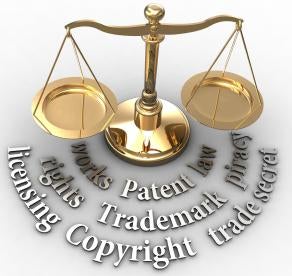HELSINN HEALTHCARE S.A., v. TEVA PHARMS. USA, INC.: May 1, 2017. Before Dyk, Mayer, O’Malley.
Takeaway:
-
An agreement contracting the claimed invention for sale contingent on regulatory approval is still a commercial sale, and thus the absence of FDA or other regulatory approval before the critical date does not prevent a sale or offer for sale from triggering the on-sale bar.
-
The fact that an agreement contains a provision for the purchase of different dosages does not thwart the application of the on-sale bar.
-
After the AIA, if the existence of the sale is public, the details of the invention need not be publicly disclosed in the terms of sale.
-
The completion of Phase III studies and final FDA approval are not pre-requisites under the on-sale bar for the invention to be ready for patenting.
Procedural Posture:
Teva appealed D. N.J.’s decision that the asserted claims of the four patents-in-suit were not invalid under the on-sale bar provision of 35 U.S.C. § 102. CAFC reversed.
Synopsis:
-
On-Sale Bar: Under the Pfaff framework, the on-sale bar requires that, before the critical date, the claimed invention: (1) was the subject of a commercial offer for sale and (2) was ready for patenting. This application of the on-sale bar is a question of law that the CAFC reviews de novo, and the factual findings underlying the district court’s conclusion are reviewed for clear error.
-
The CAFC first addressed whether the invention was subject to a sale or offer for sale prior to the critical date:
-
As to the three patents that were governed by pre-AIA statutory framework, the CAFC held that the asserted claims were subject to an invalidating contract for sale prior to the critical date. Specifically, the CAFC held that an agreement contracting for sale the claimed invention contingent on regulatory approval is still a commercial sale as the commercial community would understand that term. This is true irrespective of whether the future goods have yet to receive necessary regulatory approval because a contract for sale that includes a condition precedent is still a valid and enforceable contract. Thus, the CAFC held that the absence of FDA or other regulatory approval before the critical date does not prevent a sale or offer for sale from triggering the on-sale bar. While the absence of FDA approval may be a relevant consideration depending upon the other circumstances surrounding a transaction relating to a pharmaceutical formulation, the fact that a transaction was subject to regulatory approval would not, absent more, prevent it from being a sale for purposes of the on-sale bar. The CAFC also held that the fact that the agreement contained a provision for the purchase of different dosages did not thwart the application of the on-sale bar.
-
As to the fourth patent that was governed by the AIA, the CAFC held that the AIA did not change the statutory meaning of “on sale” in the circumstances involved here. Specifically, the CAFC concluded that, after the AIA, if the existence of the sale is public, the details of the invention need not be publicly disclosed in the terms of sale. Here the CAFC found that the particular Supply and Purchase Agreement constituted a sale of the claimed invention—the 0.25 mg dose—before the critical date, and therefore both the pre-AIA and AIA on-sale bars applied. The CAFC, however, noted that it does “not find that distribution agreements will always be invalidating under § 102(b).” Rather, it “simply find[s] that this particular Supply and Purchase Agreement is.”
-
-
Next, the CAFC addressed whether the invention was ready for patenting as of the critical date. The CAFC noted that under Pfaff, there are at least two ways in which an invention can be shown to be ready for patenting: (1) by proof of reduction to practice before the critical date; or (2) by proof that prior to the critical date the inventor had prepared drawings or other descriptions of the invention that were sufficiently specific to enable a POSITA to practice the invention. Here, the CAFC concluded that the invention was ready for patenting because it was reduced to practice before the critical date, and thus the CAFC noted that it did not need to address the alternative enablement approach. The district court had clearly erred by applying too demanding a standard when it held that the invention was not reduced to practice before the critical date because Teva had not met the FDA standard, which requires finalized reports with fully analyzed results from successful Phase III trials. The CAFC held that the completion of Phase III studies and final FDA approval were not pre-requisites for the invention here to be ready for patenting. Rather, the evidence was overwhelming that before the critical date it was established that the patented invention would work for its intended purpose of reducing the likelihood of emesis.




 i
i


